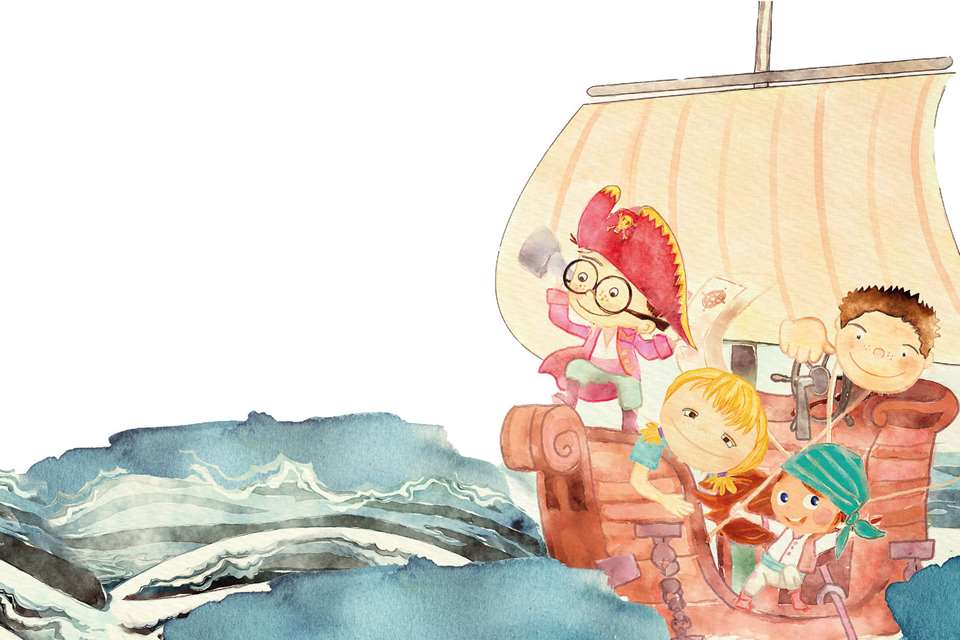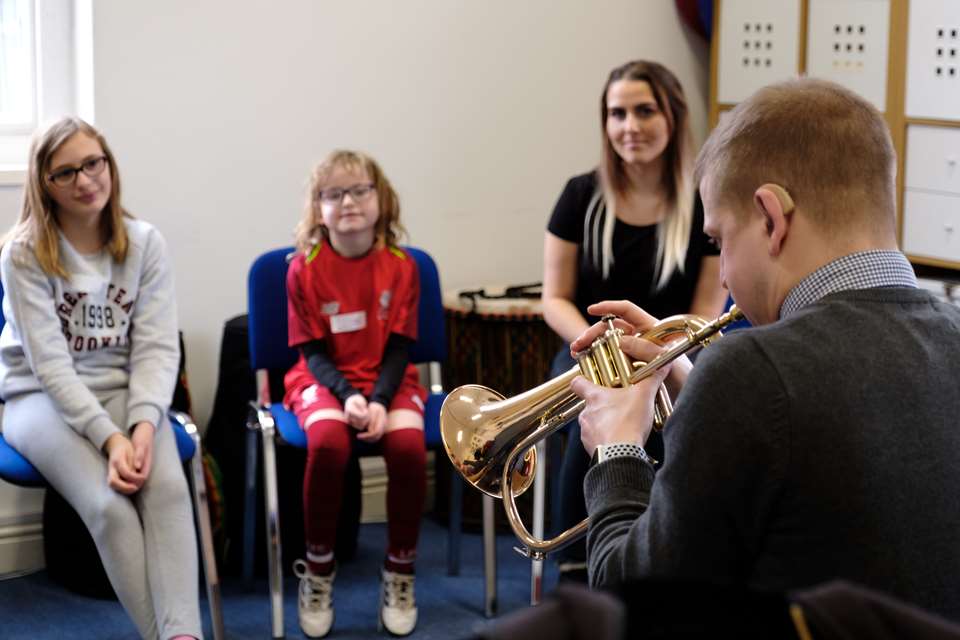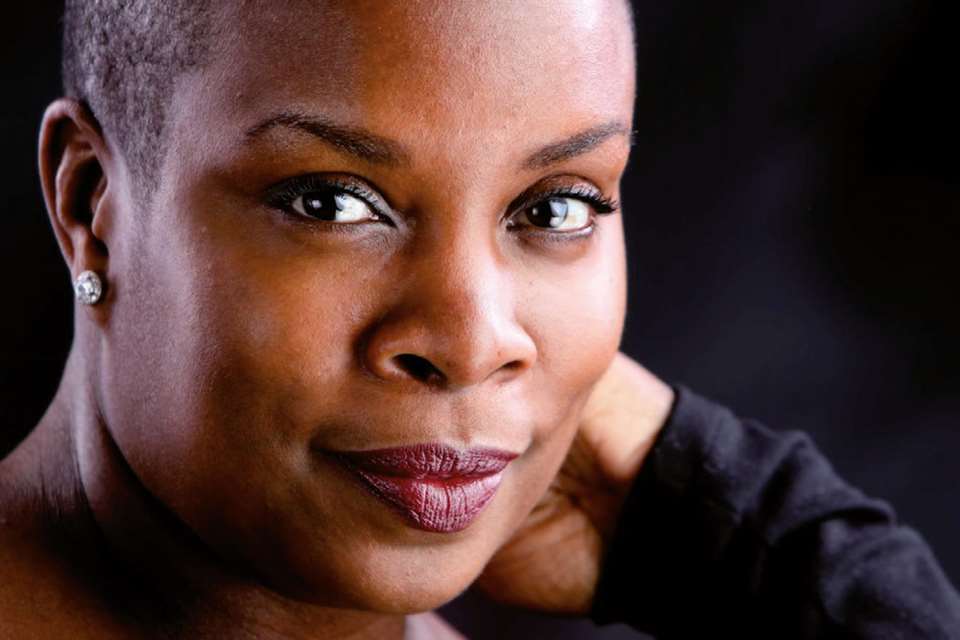Q&A: Sean Chandler
Hattie Fisk
Wednesday, February 1, 2023
Teacher of the D/deaf/F and music workshop leader Sean Chandler strives to be a positive role model to young musicians with profound hearing loss, as Hattie Fisk finds out

Courtesy Sean Chandler
HF: Can you tell me a bit about yourself and your work?
SC: I am Sean. I have severe to profound hearing loss and wear two Danalogoc hearing aids. A former member of the National Youth Brass Band of Great Britain (NYBBGB), I am a cornet and trumpet player. I play lead trumpet with the Phil Shotton Big Band, am guest lead trumpet player in various other Big Bands, and hold the principal cornet seat with the Shepherd's Group Brass Band.
I am a qualified secondary music teacher and a Qualified Teacher of the D/deaf/F. I am also a staff member of the NYBBGB and a trustee of both NYBBGB and Yorkshire Youth Music. Besides this, I add subtitles and translate into BSL any content that organisations want me to. A recent project I did was the Foden's Brass Band Heritage interviews.
HF: How did you come to work as a Teacher of the D/deaf/F?
SC: I have always wanted to be a teacher, just from watching my mother teach. She was an outstanding teacher of English and watching her form relationships with the pupils she taught in Bootle, Liverpool, gave me a strong positive template to work from when setting out my stall as a teacher myself.
Being DeaF and having qualified as a mainstream music teacher, I was invited to lead a workshop with D/deaf/F children in a school in Milton Keynes. They had an opening for a teacher. Following the workshop, the head invited me into the office to ask me to apply for the role; a fortnight later, I had the job.
I am now a Qualified Teacher of the D/deaf/F (ToD) and work as a peripatetic teacher to lead workshops and awareness training for music teachers and businesses.
HF: Did you have any D/deaf/F role models when you were growing up? Why do you think this is an important thing for young musicians?
SC: I did not have any D/deaf/F role models when I was growing up. People often told me about their (often older) family members and friends having hearing loss. There was no social media when I was growing up, so I never met another D/deaf/F person, really, until I was 22. Now as a ToD, I can see the benefit of being a role model myself when I am leading workshops and teaching in schools. My lack of a role model has probably driven me to become one; I follow the saying: ‘there is someone out there younger than you, who looks like you, who needs to meet you’.
HF: What is the response like from D/deaf/F children in your music workshops?
SC: Instant connection, really. The Deaf community talk about a ‘shared oppression’, which means that because I am DeaF, I understand the barriers and communication frustrations that another deaf person has. This means an instant affinity. With D/deaf/F children, they see me leading workshops and performing music despite the barriers I face, and start to believe they can do this too. In those situations, the magic, for me, isn't just in the workshop itself; it's in the conversations I have afterwards with the D/deaf/F students and their parents, where the sparks fly. Also, because I sign and speak, there is power in the fact that there is a direct relationship with the participant, and there is no need for a BSL interpreter.
HF: What changes would you like to see in the world of music education regarding inclusivity over the next five years?
SC: There are different types of Deafness, which means that some D/deaf/F children will be able to access more sounds than others, particularly if they have improved hearing-assisting technology, such as hearing aids and cochlear implants. Teachers need to have more Deaf awareness training to realise how simple tweaks can include the D/deaf/F child in the music classroom. Inclusion and Integration are not the same thing! There needs to be consideration given to assessment too – D/deaf/F children need more time to process aural information, so time restrictions around repeating clips, composition and performance need to be adjusted to accommodate this.
HF: What tips would you give music teachers who are looking for ways to include and cater for D/deaf/F students?
SC: Firstly, pre-teaching. Send any work or listening material to the children or the children's teacher before the lesson so that they can listen quietly to the material beforehand. D/deaf/F children do not have access to incidental learning (information picked up by over-hearing or accessing the world around them), so they need to have this explicitly taught to them. Secondly, effective communication with D/deaf/F students is about clarity, not volume. More chaos ensues when we simply turn up the volume. Thirdly, if the child is wearing a Radio Aid or Mini Mic, please consider taking it off for practical lessons.
HF: What has been a highlight of your career so far?
SC: I guess performing at Buckingham Palace with the BBC, as part of ‘Goldie's Band: By Royal Appointment’, will always be a highlight. I was also part of the world's first Deaf ensemble – Forte, with the outstanding D/deaf/F musicians Danny Lane, Ruth Montgomery and Eloise Garland. I have also performed at the Barbican alongside Paul Whittaker, in BSL signed song with a professional choir. It was surreal taking to the stage without a cornet or trumpet to hang on to!
In terms of teaching, setting up two D/deaf/F brass ensembles (with the charity Music and the Deaf) has been a real game changer and inspiration for me, and has given staff a lot of food for thought in terms of differentiating materials so that D/deaf/F children can access them. In addition, I Can Play is a series of music workshops that I lead with my wife, in partnership with both the National Centre for Early Music and Music and the Deaf. Based in York, we are going from strength to strength developing D/deaf/F musicians of the future.
HF: What do you hope to achieve in the future?
SC: I want to teach D/deaf/F children, who have BSL as their first language, how to conduct. I have this dream to teach them the basics of conducting, find an orchestra to stand them up in front of, and let them take ownership and experience the thrill of conducting.
I won the conducting prize at university as a skinny 21-year-old student in my third year of studying, and I was up against mature students who already were conducting bands and carving successful careers as conductors. Conducting is about body language, handshapes, communication, gesture, trust and mutual understanding – the very pillars on which sign language is built. Why can't we use the natural qualities that D/deaf/F BSL children have for the benefit of the Deaf and hearing music community?
HF: Are there any resources you would like to signpost?
SC: Check out the I Can Download and Play resources online, as well as the Yorkshire Youth Music short videos which I present with Eloise Garland.
Read more about the term ‘DeaF’ on Chandler's blog.








